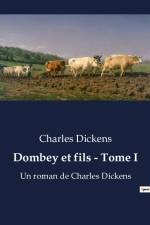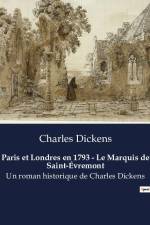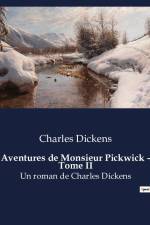av Charles Dickens
515,-
Barnaby Rudge: A Tale of the Riots of 'Eighty (titre français : Barnabé Rudge, conte des émeutes de quatre-vingt), habituellement connu en anglais sous le titre de Barnaby Rudge, est un roman historique de Charles Dickens (1812-1870), publié en Angleterre par Chapman & Hall sous la forme de feuilleton de quatre-vingt-huit épisodes hebdomadaires de février à novembre 1841 dans l'éphémère revue Master Humphrey's Clock (« L'Horloge de Maître Humphrey », 1840-1841).L'action du roman concerne un ancien meurtre perpétré dans une petite ville non loin de Londres, sur quoi se greffent, quelque vingt-cinq ans après, les émeutes anti-catholiques dites Gordon Riots, conduites par Lord George Gordon, qui, du 2 au 10 juin 1780 à Londres, ont provoqué de très importants dégâts et fait de nombreuses victimes.Barnaby Rudge est le septième roman de Charles Dickens, d'abord conçu en 1836 sous le titre Gabriel Vardon, The Locksmith of London (« Gabriel Vardon, serrurier à Londres »), pour Richard Bentley qui rêve d'une grande ¿uvre romanesque en trois volumes (three-decker) destinée à sa revue, le Bentley's Miscellany. Longtemps retardé par divers démêlés éditoriaux, il est finalement rassemblé en un seul volume par Chapman & Hall avec son titre définitif. C'est le premier essai de Dickens dans le genre historique, le second étant A Tale of Two Cities (Le Conte de deux cités), publié en 1859 et situé au temps de la Révolution française. La première édition a été illustrée par George Cattermole et Hablot K(night) Browne, dit Phiz.D'après Gordon Spence, c'est l'¿uvre d'un homme jeune (29 ans) en pleine possession de son thème, qu'il a depuis longtemps déjà l'ambition de traiter avec envergure, et le chemin ayant conduit à sa publication fait écho à la montée en gloire de l'écrivain. Pourtant, il ne figure pas au palmarès des ¿uvres les plus appréciées de Dickens3 et a été peu exploité par la caméra, puisqu'existent seulement un film muet réalisé en 1915 et une adaptation produite par la BBC en 1960..






























